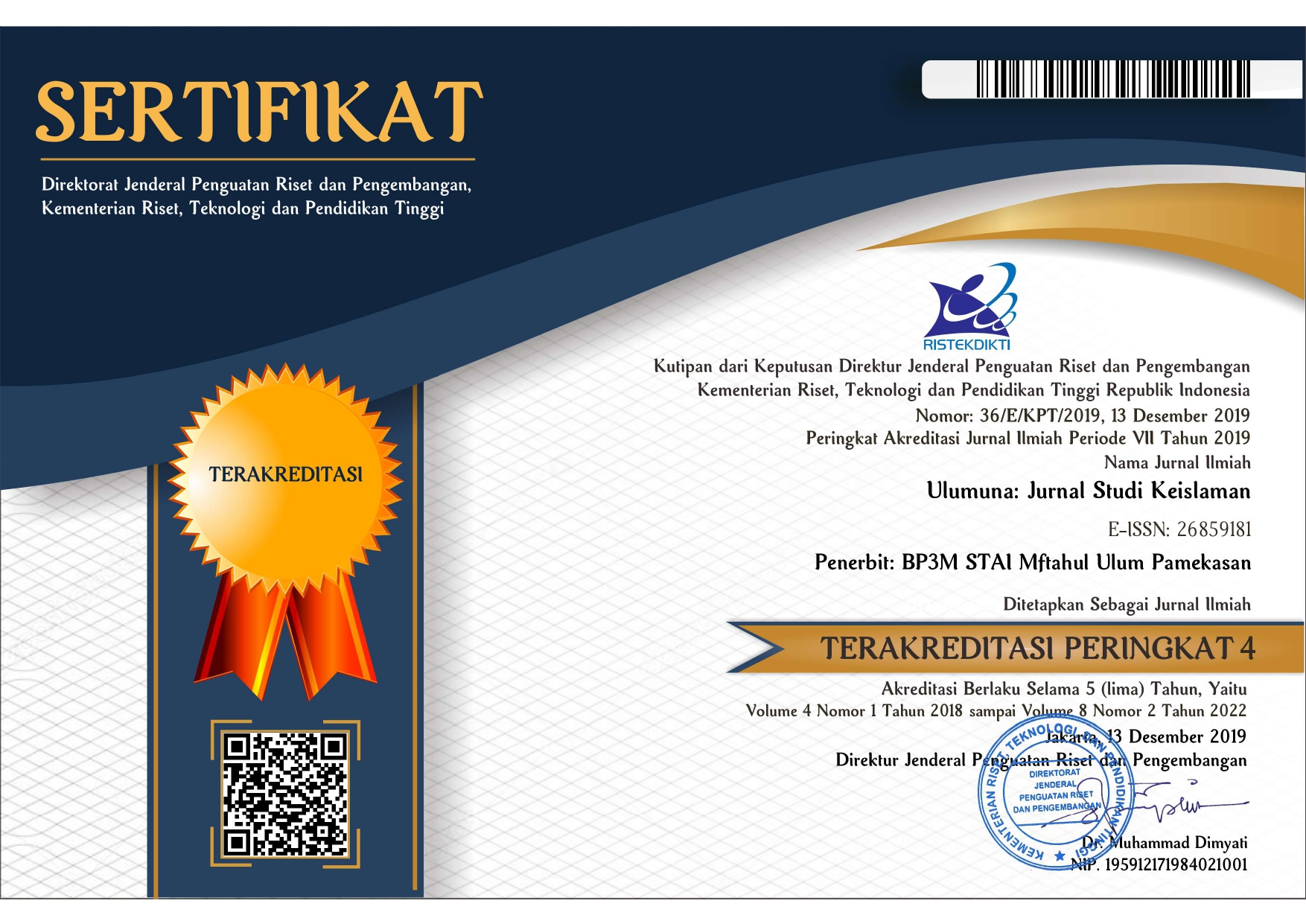PENERAPAN METODE TERJEMAH DALAM PEMBELAJARAN BAHASA ARAB DI MADRAH ALIYAH SUKOREJO SITUBONDO
Abstract
Arabic is the main language for Muslims in communicating, either with goals or with others, in addition to using other languages. This is because the teachings of all Islamic religions are in Arabic which must be understood and understood by its adherents. Because of the importance of this language, Arabic is used as one of the subjects of Islamic learning. Therefore, the implementation of teaching cannot be separated from the constraints or educational components that can produce good quality. Referring to the above in this study the researcher raised the problem of "Application of Translation Methods in Arabic Learning at Madrah Aliyah Sukorejo Situbondo with a research focus" How to Apply the Translation Method in Arabic Language Learning and what are the obstacles faced and the efforts to overcome them. In accordance with the explanation above, the Application of Translation Methods in Learning Arabic at Madrah Aliiyah Sukorejo Situbondo. Applied with the Tarjamah method in Arabic learning at MA Salafiyah Syafi'iyah there are two elements, steps or an integral part of the translation process as follows: Presenting sentences to find out their meaning and if students do not know the meaning of these sentences, students are required to open a dictionary and The teacher instructs the students to translate Arabic texts then the students read the translated text. so that the teacher knows the students' abilities regarding Arabic grammar and the constraints of applying the tarjamah method in learning Arabic is the lack of knowledge about Arabic grammar for students with graduate school educational backgrounds due to differences in orientation, personality and memorization abilities of each student and the efforts To overcome these obstacles is for teachers who hold this material, it is hoped that they will often give assignments designed with this method and increase the lesson hours for students with graduate backgrounds about Arabic grammar and educators to maximize the evaluation of the translation method for all students, both students. dozens of schools or madrasah graduate students. After the author carried out the research steps, it turned out that there were several factors that became obstacles in learning Arabic, both in terms of teaching methods, the lack of student interest in Arabic language material, less equitable educational equipment, of course, requires serious handling as a practical solution to improve the method used as an effort to improve in delivering Arabic material, and its benefits are to make students enthusiastic about learning and skilled in translating and speaking Arabic. This study uses a qualitative approach, by taking a research sample of students of Madrasah Aliyah Salafiyah Syafi'iyah madrasah principals and Arabic teachers using data collection methods, interviews, observation, and documentation. From the data analysis process, the following conclusions are obtained: first, the use of The method in delivering Arabic language material has been carried out optimally with the content of the material, Second, the teacher's efforts in applying the translation method have been carried out optimally, such as the goals to be achieved, the teacher's ability, the ability of students, the situation and conditions of teaching, the available facilities, and the advantages and disadvantages of each method.Downloads
Published
2017-06-27
How to Cite
Sulaiman, E. (2017). PENERAPAN METODE TERJEMAH DALAM PEMBELAJARAN BAHASA ARAB DI MADRAH ALIYAH SUKOREJO SITUBONDO. Ulumuna: Jurnal Studi Keislaman, 3(1), 98–117. Retrieved from https://ejournal.kopertais4.or.id/madura/index.php/ulumuna/article/view/4119
Issue
Section
Articles
License
Jurnal ini terbuka untuk umun dan bisa digunakan untuk kepentingan ilmiah lainnyaÂ








